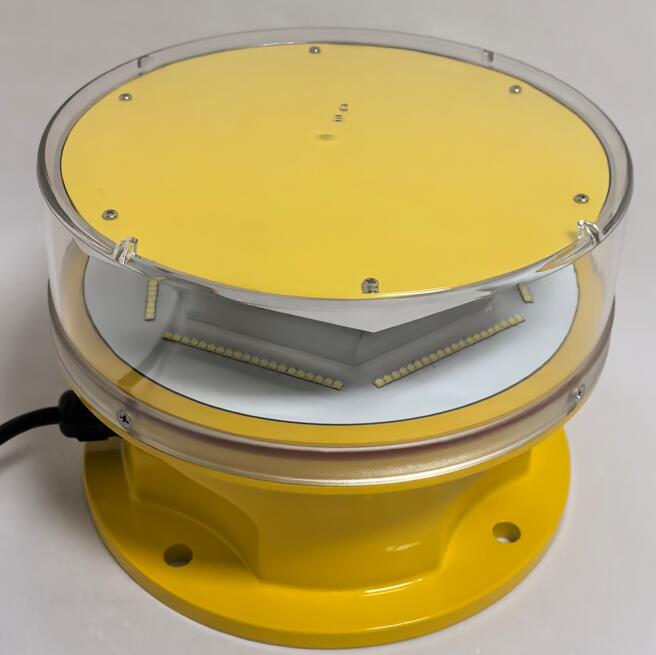Obstruction light building is a critical aspect of modern aviation and architectural safety. These specialized lighting systems are installed on tall structures—such as skyscrapers, telecommunication towers, and wind turbines—to alert aircraft of potential hazards, especially during low-visibility conditions. As urbanization accelerates and buildings grow taller, the demand for reliable obstruction lighting solutions has never been higher. This article explores the importance, types, regulations, and technological advancements in obstruction light building.
The Importance of Obstruction Light Building
The primary purpose of obstruction lighting is to prevent collisions between aircraft and man-made structures. Without proper illumination, tall buildings and towers pose significant risks, particularly at night or in adverse weather conditions like fog or heavy rain. Obstruction lights ensure that pilots can identify and navigate around these structures safely.
Additionally, obstruction light building contributes to compliance with aviation safety regulations. Authorities such as the Federal Aviation Administration (FAA) and the International Civil Aviation Organization (ICAO) mandate specific lighting requirements for structures exceeding certain heights. Failure to comply can result in legal penalties and increased accident risks.

Types of Obstruction Lights
Obstruction lighting systems vary depending on the structure’s height, location, and purpose. The most common types include:
1. Low-Intensity Obstruction Lights
These are typically used on structures below 45 meters (148 feet). They emit a steady red light and are often installed on buildings in urban areas where taller structures are nearby.
2. Medium-Intensity Obstruction Lights
Medium-intensity lights are suitable for structures between 45 and 150 meters (148 to 492 feet). They can be either steady-burning red lights or flashing white lights, depending on the environment and regulatory requirements.
| obstruction light building |
3. High-Intensity Obstruction Lights
For structures exceeding 150 meters, high-intensity flashing white lights are mandatory. These powerful lights are visible from long distances and are crucial for very tall buildings, communication towers, and wind farms.
4. Dual Lighting Systems
Some structures require a combination of red and white lights to enhance visibility. For example, a building might use steady red lights at lower levels and high-intensity white strobes at the top.
Regulations and Compliance
Obstruction light building must adhere to strict guidelines set by aviation authorities. Key regulatory bodies include:
Federal Aviation Administration (FAA) – In the U.S., the FAA mandates obstruction lighting based on structure height and proximity to airports.
International Civil Aviation Organization (ICAO) – Provides global standards for obstruction lighting to ensure uniformity in aviation safety.
European Aviation Safety Agency (EASA) – Regulates lighting requirements across European airspace.
Non-compliance can lead to fines, forced modifications, or even demolition orders in extreme cases. Therefore, architects and engineers must integrate obstruction lighting plans early in the design phase.
Technological Advancements in Obstruction Light Building
Modern obstruction lighting systems incorporate advanced technologies to improve efficiency, durability, and sustainability:
1. LED Lighting
Traditional incandescent and halogen lights are being replaced by energy-efficient LEDs. LED obstruction lights consume less power, have longer lifespans, and provide brighter illumination.
2. Solar-Powered Systems
In remote locations where electrical infrastructure is limited, solar-powered obstruction lights offer a sustainable solution. These systems store energy during the day and operate autonomously at night.
3. Smart Monitoring and Automation
Newer systems feature remote monitoring capabilities, allowing maintenance teams to detect failures in real time. Automated diagnostics reduce downtime and enhance reliability.
4. Eco-Friendly Designs
Manufacturers are developing lights with minimal light pollution to protect nocturnal wildlife while maintaining aviation safety standards.
Future Trends in Obstruction Light Building
As smart cities and sustainable architecture evolve, obstruction lighting will continue to advance. Future trends may include:
Integration with IoT – Lights connected to centralized aviation networks for real-time adjustments.
Adaptive Lighting – Systems that adjust brightness based on weather conditions and aircraft proximity.
Drone-Compatible Lighting – With the rise of drone traffic, obstruction lights may incorporate signals for unmanned aerial vehicles (UAVs).
Obstruction light building plays a vital role in aviation safety and urban development. By adhering to regulations, leveraging new technologies, and anticipating future needs, architects and engineers can ensure that tall structures remain safe for both aircraft and surrounding communities. As cities continue to grow vertically, the importance of efficient and reliable obstruction lighting will only increase, making it an indispensable component of modern infrastructure.